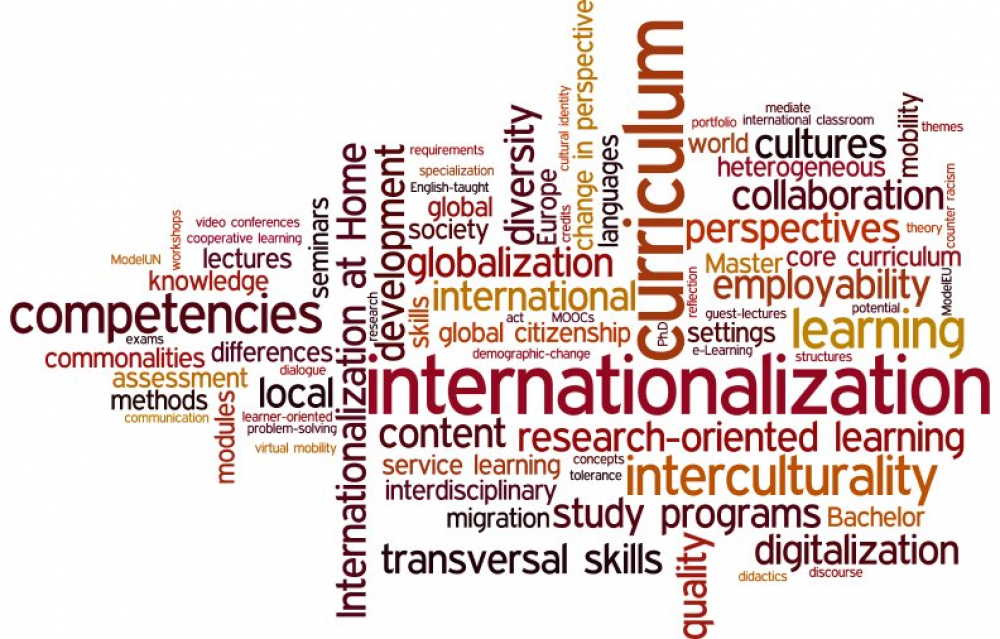Internationalization has shifted its focus to curriculum and student learning
Global education
Curriculum internationalisation has become more of a focus for higher education institutions in recent years. Establishing a strong sense of collaboration between faculty and international educators is crucial for success. After six years’ work on curriculum internationalisation, Jiangyuan (JY) Zhou wants to share her experience with regard to effectively engaging faculty in curriculum internationalisation.
Lesson 1: Break the ‘Iron Cage’
International educators need to be aware of the 'Iron Cage’ created by institutional structures and job descriptions. The specialisation of each office or educator’s job prevents us from seeing the big picture of internationalisation. We should break this iron cage to expand our roles and responsibilities and be able to present ourselves as a ‘whole’ person rather than the one piece of internationalisation that we are contributing to.
Lesson 2: Create a shared language
International educators should be aware of the different definitions and implications of certain terms in different disciplines. For example, internationalisation or internationalising the curriculum can be interpreted differently, or even with contrary agendas in some cases. This confusion needs to be addressed at the early stages. International educators should work with faculty to create a shared language about curriculum and comprehensive internationalisation.
Lesson 3: Emphasise faculty’s ownership of the curriculum
International educators should not let faculty feel that they are taking over their courses. We should make it clear to faculty that these are their courses and we are working with them to support their ideas and initiatives on internationalising their courses. Faculty should see us as a resource and as collaborators who are looking to achieve the same goals through their curriculum.
Lesson 4: Realise the dynamic nature of curriculum internationalisation
Curriculum internationalisation is a time-consuming and ever-changing process. Internationalisation of higher education is a dynamic system with multiple factors and variables. We need to be aware of the potential changes in the system, such as the retirement of key faculty, changes of staff members, shifts in programme priorities or updates of university initiatives etc, and to stay alert and adapt to these changes. We also need to constantly revisit what has been done and revise or update our approaches and projects as a result.
Lesson 5: Make the case for curriculum internationalisation
Why do we need to internationalise the curriculum? What is missing from our existing curriculum? Why do faculty need to work with us in this process? International educators should make it clear to all stakeholders about the benefits of curriculum internationalisation for our students, faculty and institutions. We need to be proactive and create a culture of open communication with various offices and individuals on campus to align goals for promoting curriculum internationalisation.
Lesson 6: Align curriculum internationalisation with other institutional initiatives
Through analysing the vision and mission of the institution and identifying existing and new priorities on campus, international educators can ensure curriculum internationalisation matches these; thus, we can create a supportive and inclusive institutional context to promote and develop curriculum internationalisation. With more buy-ins, allies and resources from a variety of stakeholders, international educators can join the efforts, avoid spinning our own wheels and make our voices louder and heard by more people.
Lesson 7: Go beyond the classroom
International educators need to expand their focus and work from within the classroom to outside it. To better engage faculty, we need to consider faculty’s other responsibilities and expectations. How can we integrate faculty’s research, service, tenure and promotion into the process of curriculum internationalisation? How can we better support faculty’s needs?
We should proactively collaborate with other offices and programmes on campus, including the centre for teaching and learning, deans, faculty development initiatives, the diversity and inclusion office and student affairs etc. By doing so, faculty will not see curriculum internationalisation as an isolated thing and will be more motivated to get involved.
Lesson 8: Focus on students and learning outcomes
Curriculum internationalisation is an approach to developing global learning and preparing students to become global citizens. Faculty care the most about their students and learning outcomes; therefore, talking about students and learning outcomes (that is, end results) rather than curriculum internationalisation (that is, the process) will make it much easier for international educators to approach faculty and other stakeholders and to effectively deliver a clearer and more accurate message of what curriculum internationalisation entails.
Lesson 9: Focus on specific groups
Even though individual faculty members have different disciplinary knowledge and experience, international educators can still group faculty based on their shared interests or goals. For example, we should have a session at the orientation process for new faculty. New faculty are exploring various opportunities and it is the perfect time to plant the seed of curriculum internationalisation.
International faculty, because of their overseas backgrounds, tend to be more open to exploring curriculum internationalisation as a way to empower and highlight their international and intercultural experience and expertise. Another group is faculty who have international students in their class or lead study abroad components. These faculty are already involved in internationalisation and would be great advocates to further curriculum internationalisation on campus.
Lesson 10: Narrow your focus when you internationalise the curriculum
International educators need to be SMART – focusing on specific, measurable, achievable, realistic and timely goals – in putting curriculum internationalisation into practice. Should we focus on the course, programme or institutional levels?
As for individual courses, should we focus on the course content, instructional strategies, learning outcomes or assessments? Which approach should we use on certain courses (such as technology, languages, research etc)? International educators should carefully consider these questions and make short-term and long-term plans.
Lesson 11: Provide smaller bites
For both international educators and faculty, it is quite easy to feel overwhelmed by the dynamic and complicated process of curriculum internationalisation. It is helpful to break this complex process into small chunks of information.
Guided by specific practices and examples or by the detailed stages of projects etc, faculty have the opportunity to trial things and realise that curriculum internationalisation can begin at different levels – from adding one activity in class or a specific assignment to revising an existing course or designing a new one. As Lao Tzu said: “The journey of a thousand miles begins with one step.”
Jiangyuan (JY) Zhou is an internationalisation specialist in the Office of the Provost at Stockton University, United States. Her work and research focus on comprehensive internationalisation of higher education, curriculum internationalisation and global learning. She has published in peer-reviewed journals and created and taught a course called “Understanding Global Learning”. She has also developed many global learning projects to integrate and enhance the roles of technology, languages and cultures, community engagement and collaborative teaching across the curriculum. She currently serves as the vice chair of the Cultures and Languages Across the Curriculum Consortium and the ITLC (Internationalizing Teaching, Learning, and Curriculum) Network Leader for NAFSA’s Teaching, Learning, and Scholarship Knowledge Community.
